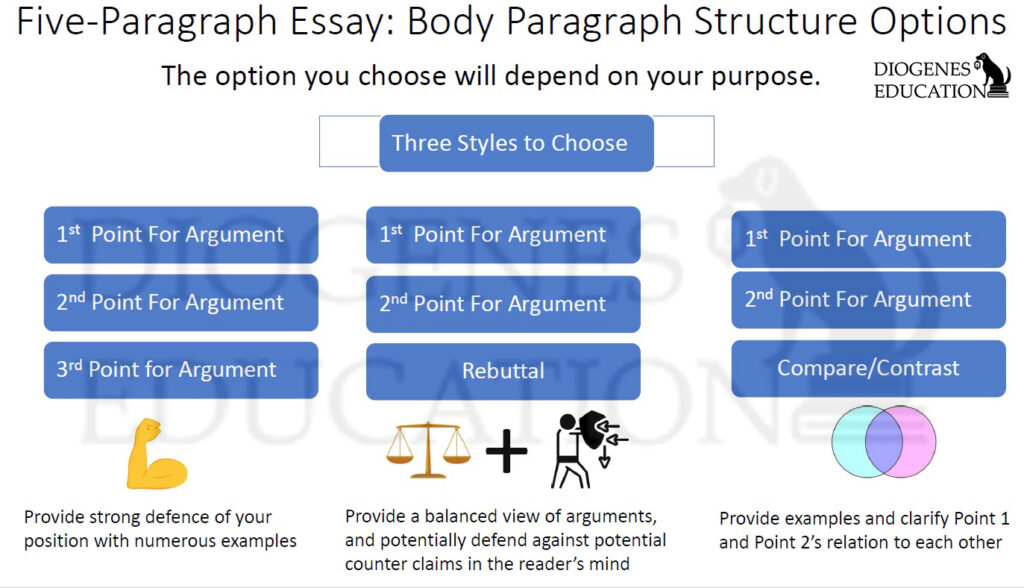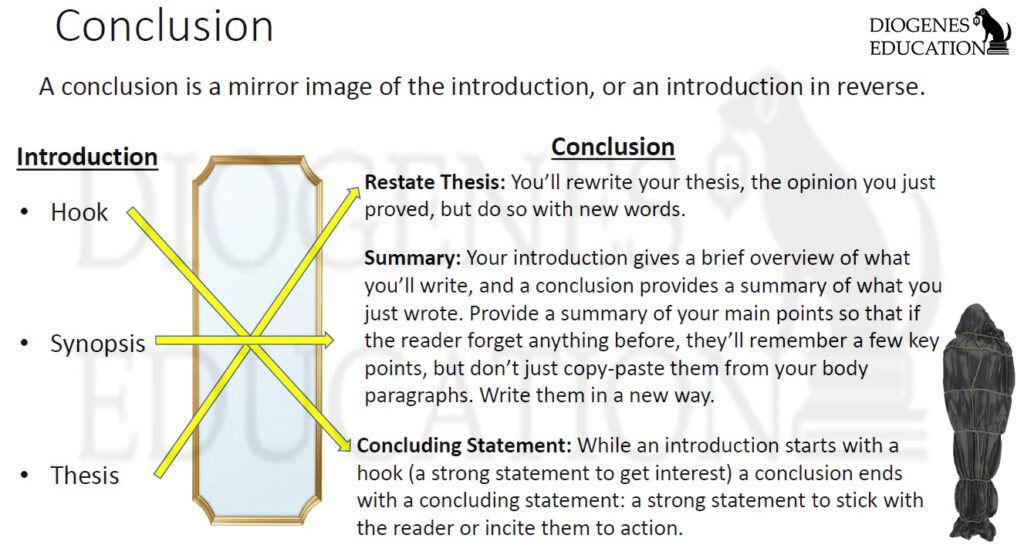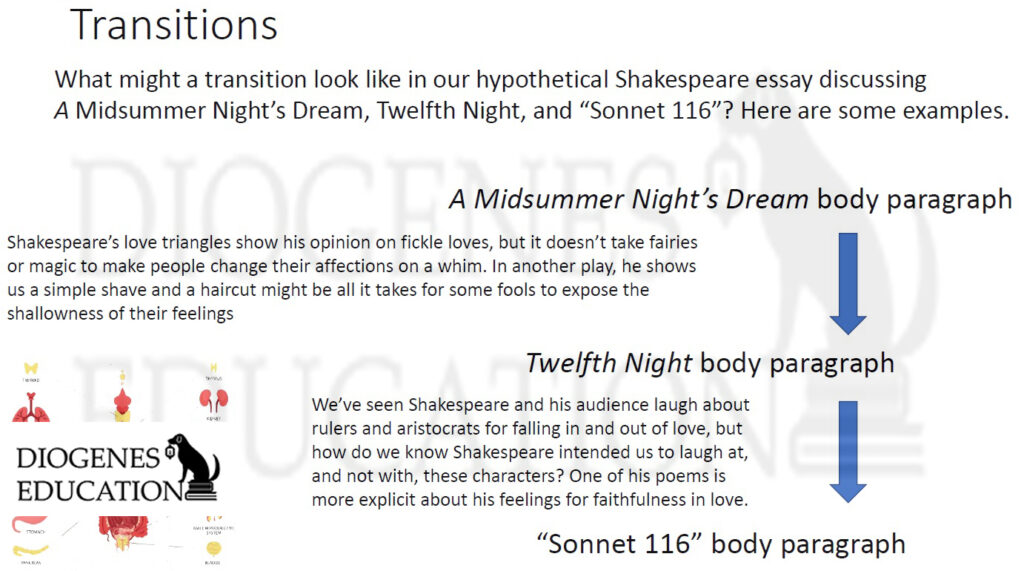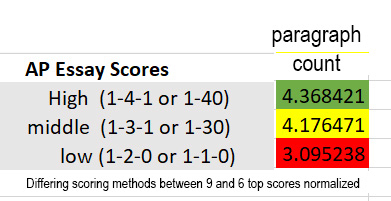

Should We Still Teach Five-Paragraph Essays?
“Für Elise” is not a great piece of music. Does that statement shock you? It might, because “Für Elise” is one of Beethoven’s most popular and recognizable compositions. You can assume that any pianist whose fingers can fly across the keys for Liszt’s “La Campanella” or stretch for Rachmaninoff’s “Piano Concerto No. 3” started with “Fur Elise” as a beginner. Despite its popularity, any musician will tell you it isn’t that great of a piece; in fact, “Für Elise” was deemed so inconsequential to Beethoven that he didn’t even bother to publish it—it was discovered in his drawer forty years after his death! So why do we teach it to every pianist when Beethoven himself thought so little of it? Because the popular first movement is easy for beginners to learn, develops the skills that weren’t mastered at the “Hot Cross Buns” stage of musicianship, and yet is popular and sounds impressive (rewarding and motivating the player). In case you didn’t read the title of this blog post, this is a metaphor for the five-paragraph essay, and an argument that the five-paragraph essay should remain a fundamental Language Arts instructional tool.
The Five-Paragraph Essay Provides an Easy Format for Beginners
In Primary-and-Middle-Year’s education, students learn the basics of spelling and grammar, and learn how to form sentences and combine them into a single paragraph. They don’t typically come to my classroom in ninth-grade ready to combine these ideas into one long, cohesive, multi-paragraph piece. The five-paragraph essay structure provides an easy-to-understand guide on how to format writing. Without a clear framework, students’ writing becomes jumbled and lacks flow. Experimental theatre exists, and yet nobody rails against the typical three-act structure of a play (used since before Shakespeare’s time and through today). So why the hate when it comes to essays? It’s because the five-paragraph essay can seem formulaic, lacking in creative options, and stifling to a great writer. But we are not teaching great writers…yet. We are teaching emerging writers. Showing them the basic structure of how to organize writing, and the function of a paragraph within an essay, is what we do. A slide from this unit shows how you can use the five-paragraph essay in three different ways.

How’s that for providing options? There is time enough for experimentation when students are more advanced. I tell my students, “When you become a prize-winning writer for the New York Times, then you can start breaking the rules. But let’s focus on finally getting an A on your first essay, first.”
The Five-Paragraph Essay Develops Skills in the Zone of Proximal Development
How will a student who forgets to capitalize their own name become a prize-winning writer (or at least earn a passing mark on an AP test)? Vygotsky, the educators’ Psychologist, theorized the concept of a zone of proximal development: this is the area where students, with support, can gain new skills beyond where they started. With Für Elise, a student who already knows the basics of piano gets to practice and advance in their skills of pedaling and left-hand arpeggios to make the piece flow with legato. With the five-paragraph essay, a student who already knows the basics of writing learns how to make their piece flow with transition sentences. They learn the anatomy of long-form writing and its parts’ “anatomical function” within a text.


They learn how multiple ideas can be combined the same way multiple movements of a song create one cohesive piece; but they won’t learn this without scaffolding to provide a framework. This is what the five-paragraph essay structure is to a developing student: it provides a plug-and-play template to “color inside the lines” before you (if you will allow me to mix my metaphors) remove the training wheels. You learn to crawl before you learn to walk. You learn to ride a bike with training wheels before you learn to ride without them. You learn to write with a five-paragraph essay template before you learn to write without it.

The Five-Paragraph Essay is Popular and Scores High Marks on the AP Tests
What should the template be for an essay that asks us to, “Organize and support an argument with multiple supporting claims,” (as appears on the AP tests)? And don’t forget the elusive “sophistication” score on the rubrics for the AP Language & Composition and the AP Literature & Composition tests stating that one should be able to “Explore complexities and tensions”. In other words: The student realizes no solutions are perfect, has weighed and understood the benefits and drawbacks of all arguments, and can explain and defend their position (as well as using excellent language and grammar). Well, people like what is familiar to them, and those who mark and score the essays are educators themselves who were likely raised on five-paragraph essay structure. Let’s examine the results of my random sample of fourteen essay sets (three-to-seven essays per set) provided by AP Central for both AP English tests:

While the most common paragraph count is four paragraphs (usually with one very large paragraph that could rightly be split in twain), there is a slight edge toward those who include that extra paragraph. This is more pronounced when you remove the outliers: high-scoring essays with multi-page paragraphs that should have been divided, and low-scoring five-paragraph essays (who only had one or two sentences per paragraph all explaining the same idea in the essay, so had “five paragraphs in name only”). Here’s a clear example of the phenomenon in action in the AP English Literature 2023 sample scoring packet: The highest-scoring paper has five paragraphs, the middle-tier paper has four, and the lowest-scoring a mere three. If you want to write a high-scoring AP essay, we can deduce that you need: an essay with an introduction, two strong supporting arguments, a rebuttal, and a conclusion; in other words: a five-paragraph essay.
𝄌Coda𝄌
Much maligned by those in academia who, “Don’t go by Mr.[insert surname here] because that was my father’s name”, the five-paragraph essay should remain in English classrooms for the same reasons “Für Elise” remains in conservatory schools: it’s easy for beginners to understand and use, it provides scaffolding to develop skills in students’ zone of proximal development, and it’s both popular and familiar so it earns applause. AP English tests are right around the corner, so if you’ve been reticent to use this time-tested template because it’s “stodgy and old-fashioned,”, or think it’s no longer contemporary because A.I., like ChatGPT, will replace or augment writing skills, it’s time to teach your students how to write a five-paragraph essay. And one last thing: If you think the five-paragraph essay has no place outside a classroom, count the number of paragraphs in the blog you just read. (Hint: it’s the same AP score your students will get if you teach them how to write a five-paragraph essay!)
Get Started With Writing Lessons in Your Classroom
Essay Writing Unit | How to Write an essay – 5 paragraph essay format
AP LANGUAGE & COMPOSITION | AP ENGLISH LANG full bundle write the perfect essay
Get a FREE SAMPLE of our lessons at our online store

